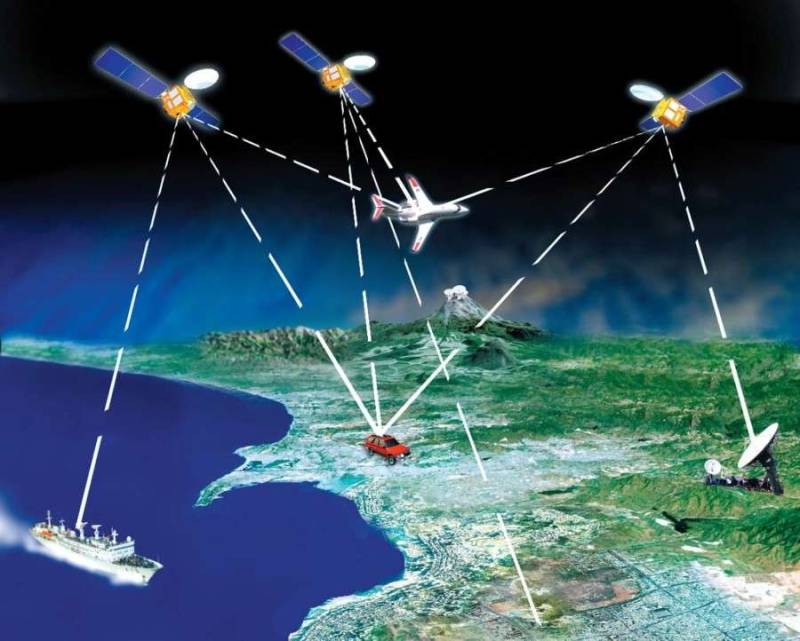Indian Navigation Satellite System "NAVIC" : Security Challenges for Pakistan
Shares

On April 28, 2016 Indian Space Research Organisation (ISRO) has launched seventh and final satellite to complete its own (Indian) Regional Navigation Satellite System (IRNSS) which will be called NAVIC (Navigation with Indian Constellation) as announced by their Premier Narendra Modi.
It all started when Indian army failed in monitoring Pakistani troops and denial of the U.S. to give access of its GPS system to India during Kargil War. Though recently senior fellow at Institute for Defence Studies and Analyses (IDSA), Ajey Lele has denied this Kargil story by saying there is no official confirmation.
However, several Indian newspapers second this fact that the main objective was military use and chief beneficiary of this system is the Indian military. The total cost of the project was US $ 211 million and will provide accurate information regarding surveillance, reconnaissance, imaging, navigation and communications in India as well as from the extended area of 1500 km in the region.
This system will offer two types of services, Standard Positioning Service (SPS) for civilian users and Restricted Service (RS), which is an encrypted service for military and agencies. Along with NAVIC, India is already working on fourth generation GSAT dedicated military communication satellites.
In this respect, ISRO successfully launched GSAT-6 in August 2015 which transmits five spot beams over the Indian mainland with help of a very exceptional huge antennae. In modern network centric warfare a large antennae will assist Indian strategic forces to communicate with each other on a secure band.
Similarly, India’s GSAT-7 satellite successfully launched in August 2013 that will assist Indian Navy to enhance its blue water combat skills. Surely, it is imposing security challenges for Pakistan while strengthening the Indian battlefield strategy, robust system for location identification and navigational support will be strengthened.
It will connect all three domains that are sea based assets (warships, nuclear submarines and air craft carries), land based assets (troops formation, conventional war tech, ballistic and cruise missiles) and air force assets (combat aircrafts).
Besides, Indian surveillance capabilities with better than 20 m eye will then be able to get accurate information on Pakistani territory, its China-Pakistan Economic Corridor (CPEC), logistics, sensitive naval, air force, military installations and deployment, etc.
Pakistan established its space program eight years earlier than the Indian space organization, but SUPARCO is now nowhere near to ISRO. It is so obvious that Pakistan governments’ priorities are off the beam in term of emphasis on space technology. Today Indian department of space has budget of round about 1 billion dollars whereas SUPARCO size in terms of monetary funds is 30.6 million dollars. India signed a framework agreement with NASA for future cooperation in 2008 and recently in 2016 inked agreements for launching satellites from UK and Singapore.
The Indian Defence Ministry has already hinted that space warfare is a priority area till 2025 under “Technology Perspective and Capability Roadmap”. Its aims to assure key technology requirements of Indian Armed Forces and integrated warfare by reducing the risk in the battlefield with the capable system of delivering information on real time basis.
Pakistan should also explore such avenues to create a platform that SUPARCO can also deliver indigenous navigational satellite system. For instance, we developed the tactical nuclear weapons (TNWs) to successfully counter the so called proactive strategy of Indian Cold Start Doctrine (CSD). We are proud of our scientists and engineers yet the decision of its deployment and use is reserved with the National Command Authority.
By this mean, we will get an alternative way of shadowing Indian military strategy, troops and assets deployment in case of CSD is implemented and we can also assure effective maneuverability to deploy TNWs, ballistic and cruise missiles. Considerably the civil uses and benefits of the navigational system are huge which will also improve our disaster management expertise.
Even though, our fragile economy is main hurdle in the way of social and technological development. Still the government, opposition and military establishments must plan to allocate appropriate budget for the employment of advance technology is the need of time.
About the authors:
Ahsan Ali Zahid is a M. Phil scholar in School of Politics and International Relations, Quaid-e-Azam University, Islamabad, Pakistan.
Hasan Ehtisham is a M. Phil scholar in Department of Strategic Studies, Quaid-e-Azam University, Islamabad, Pakistan.
